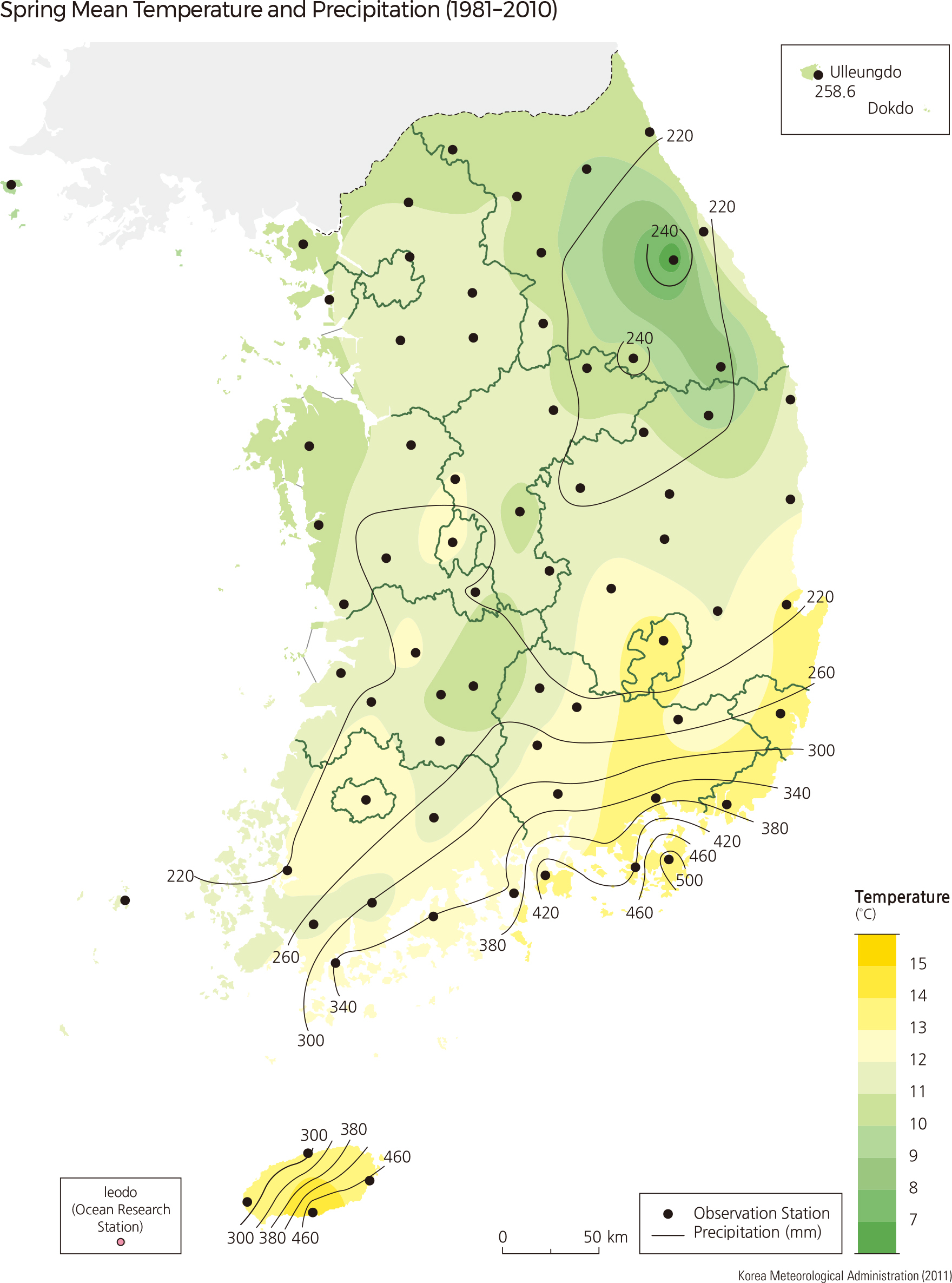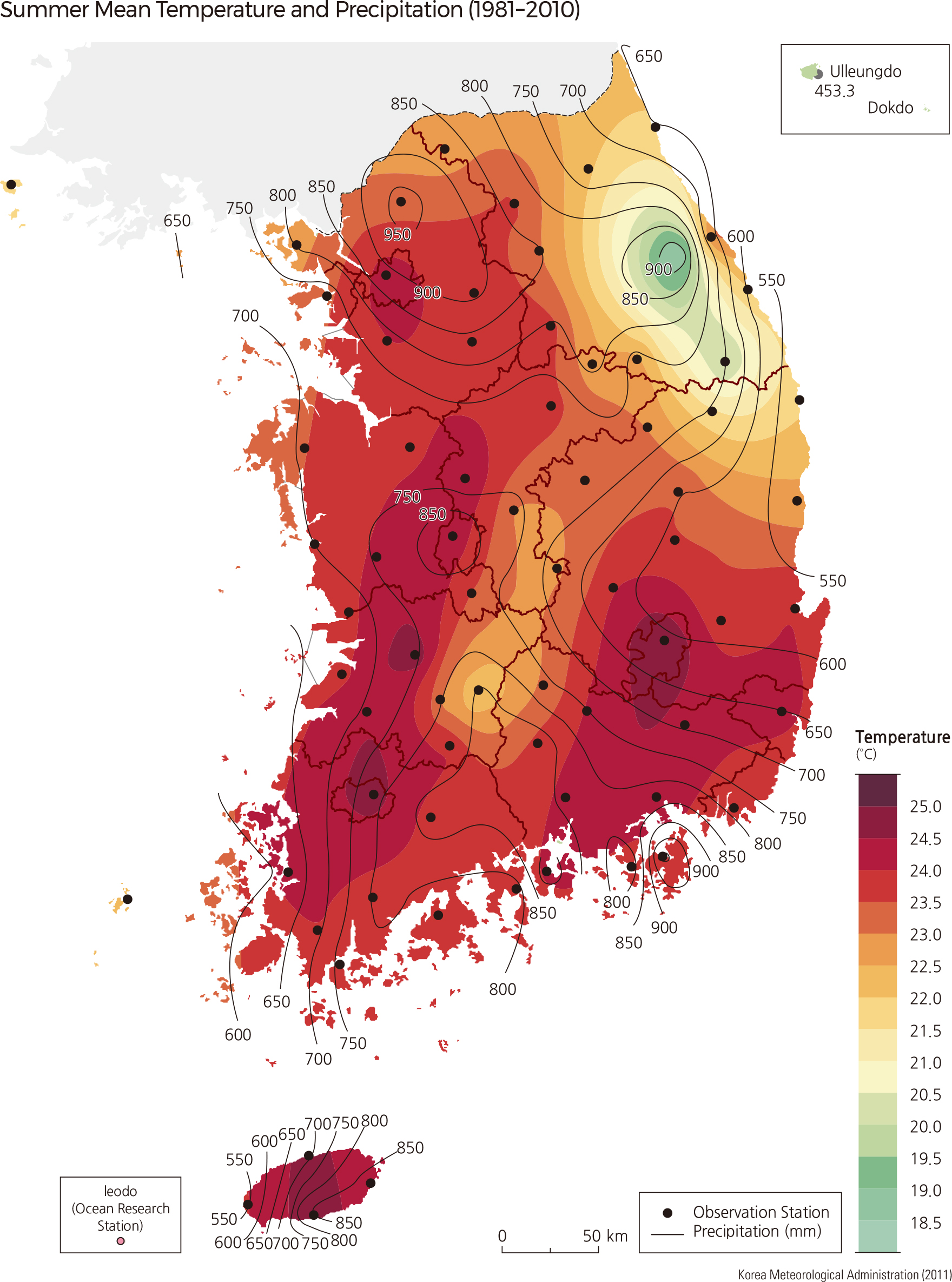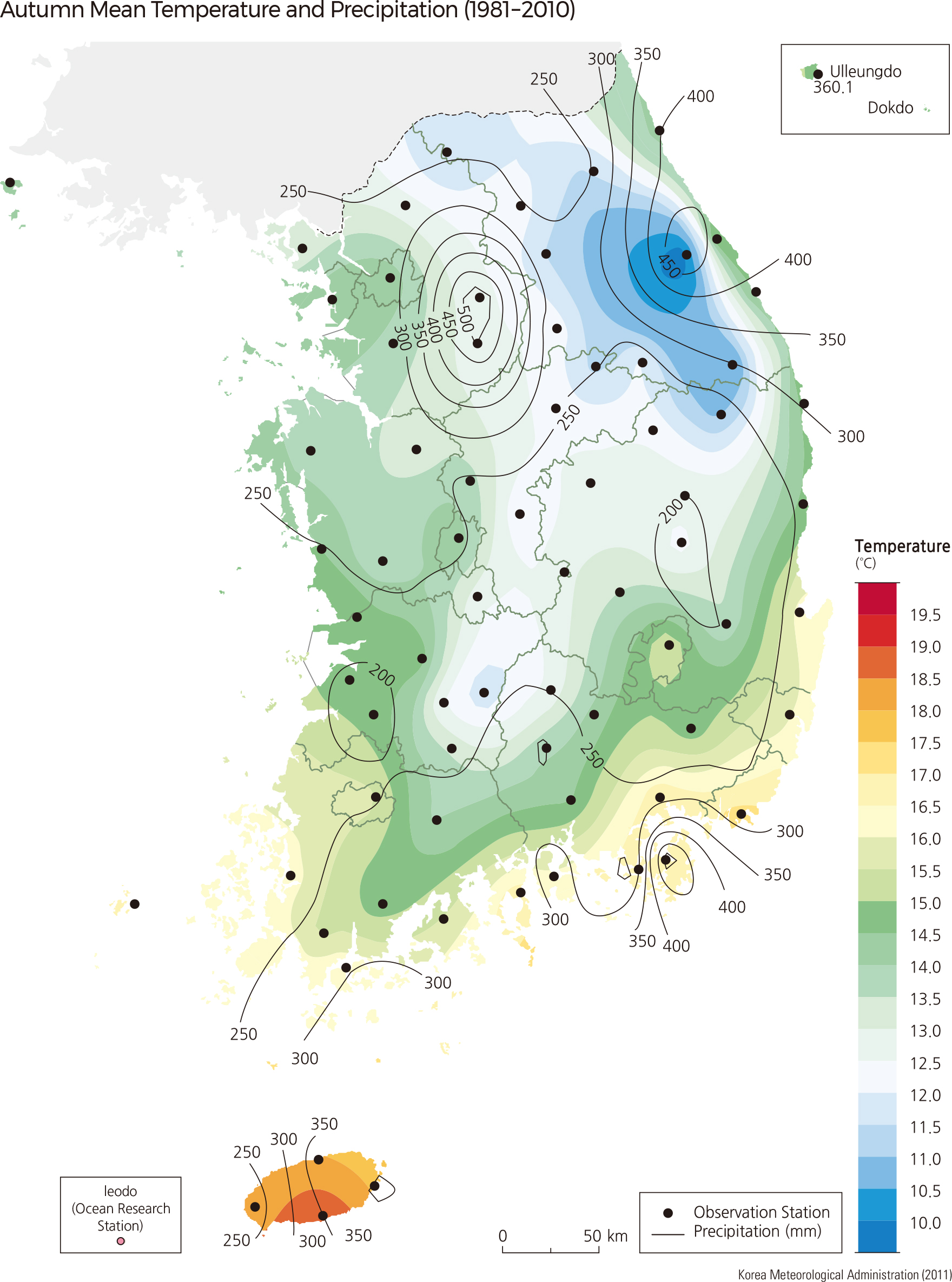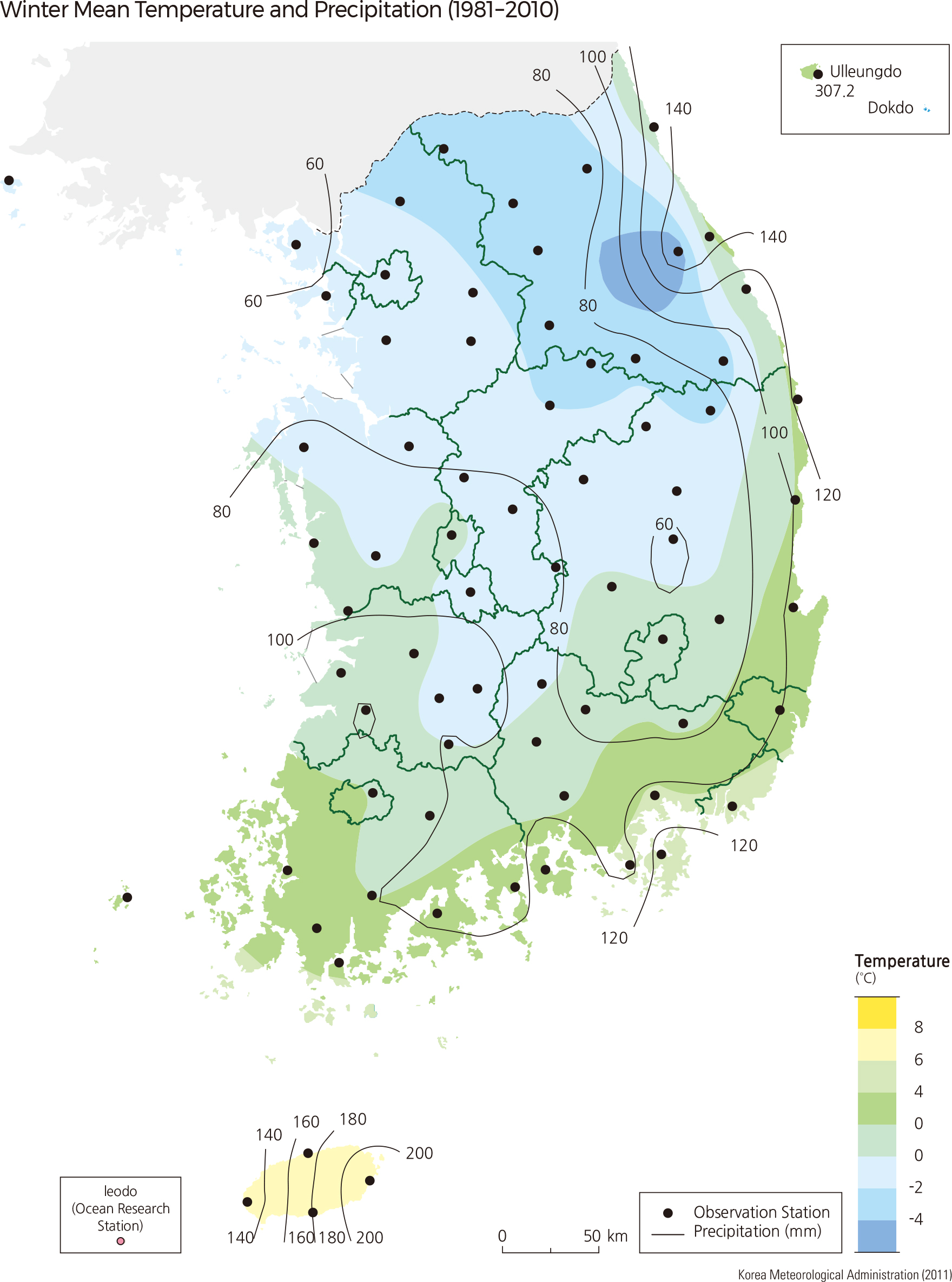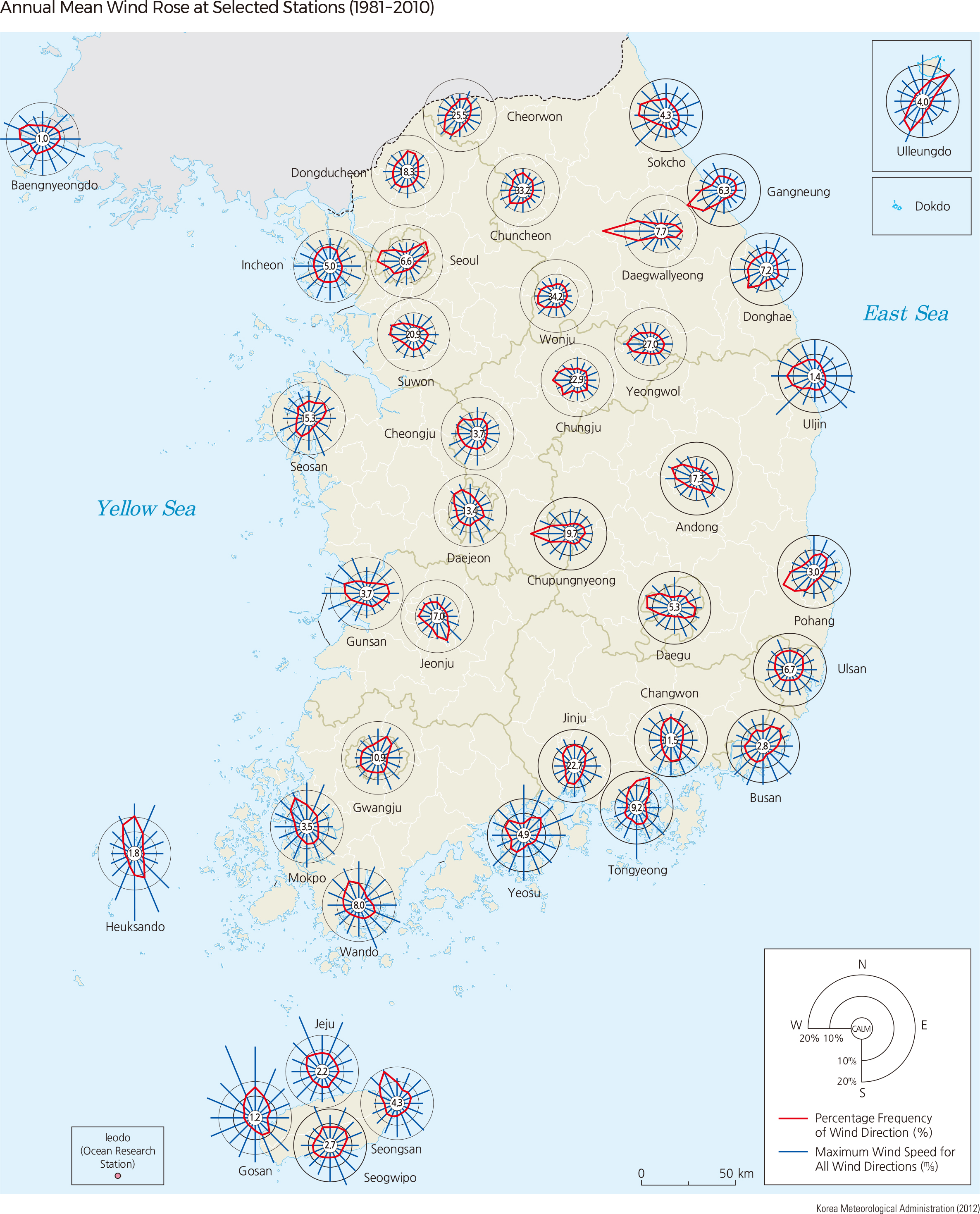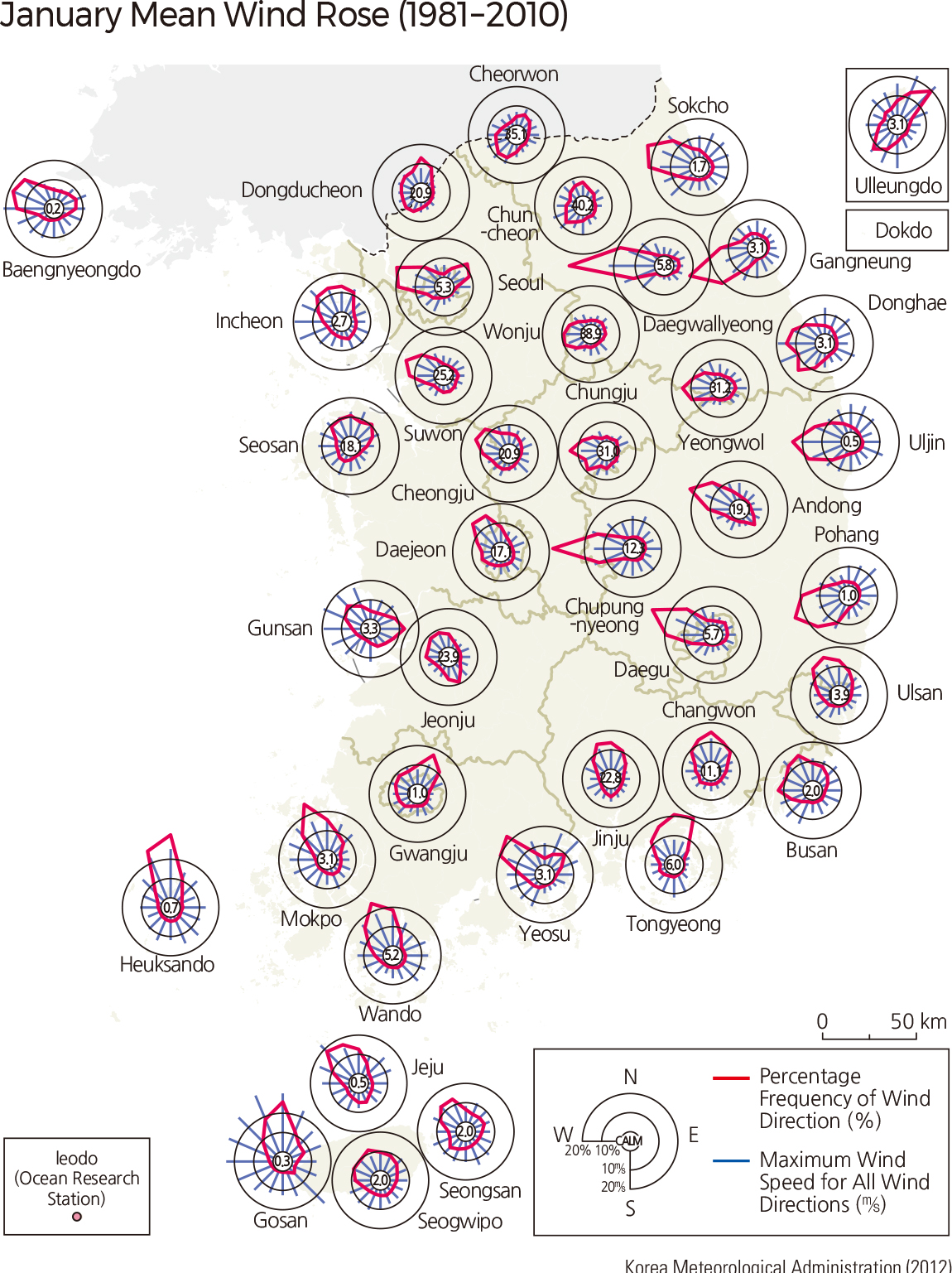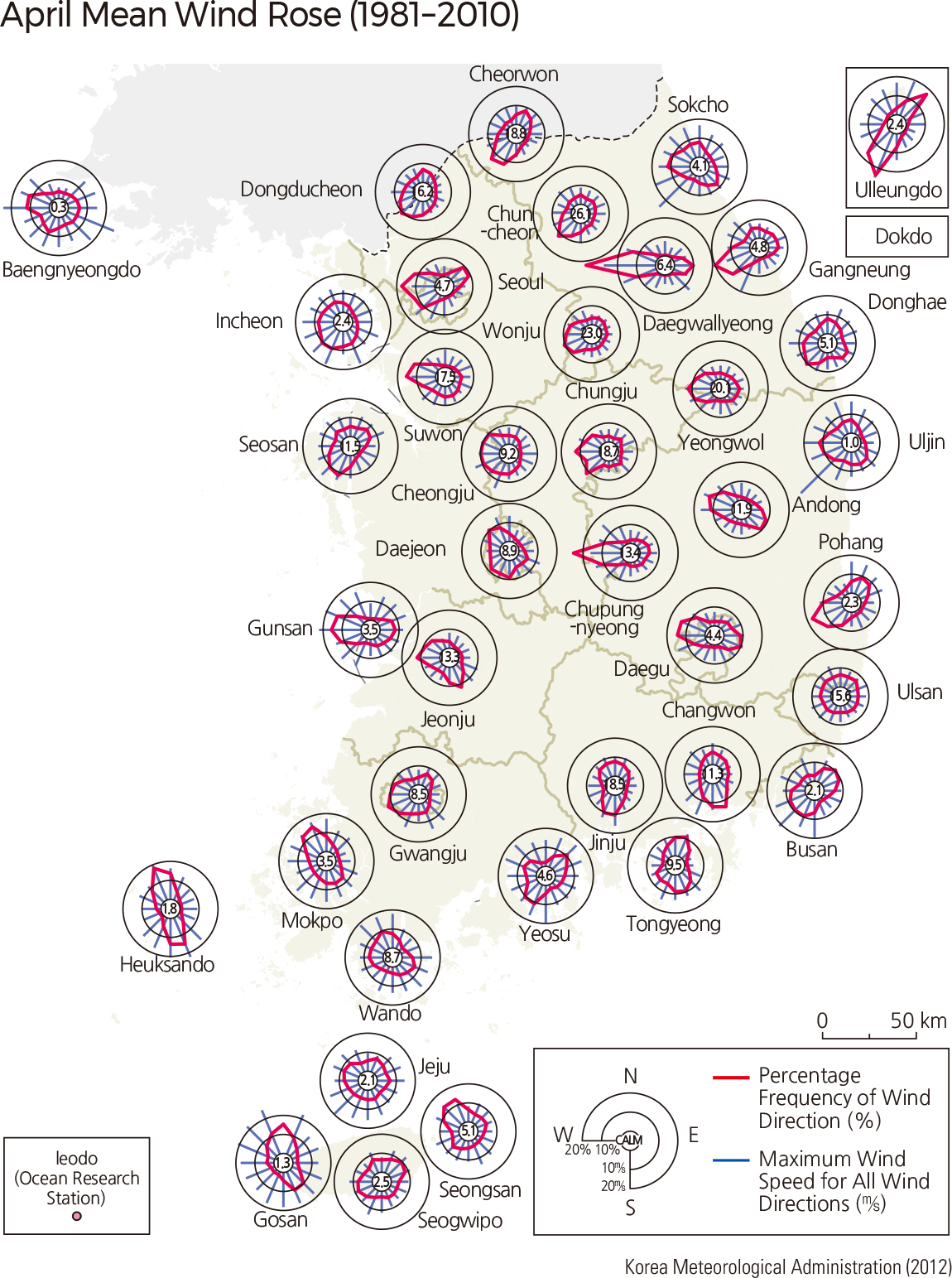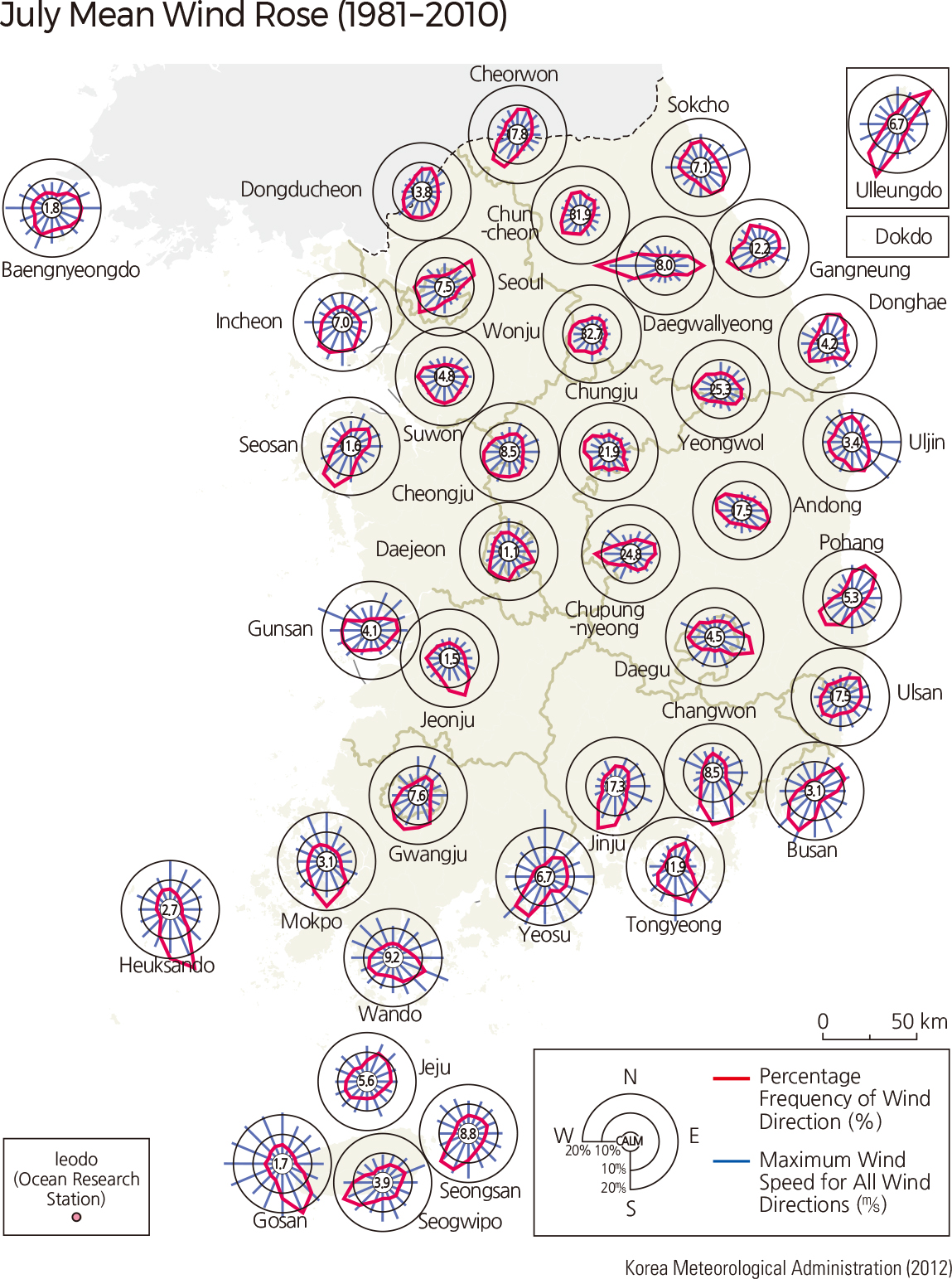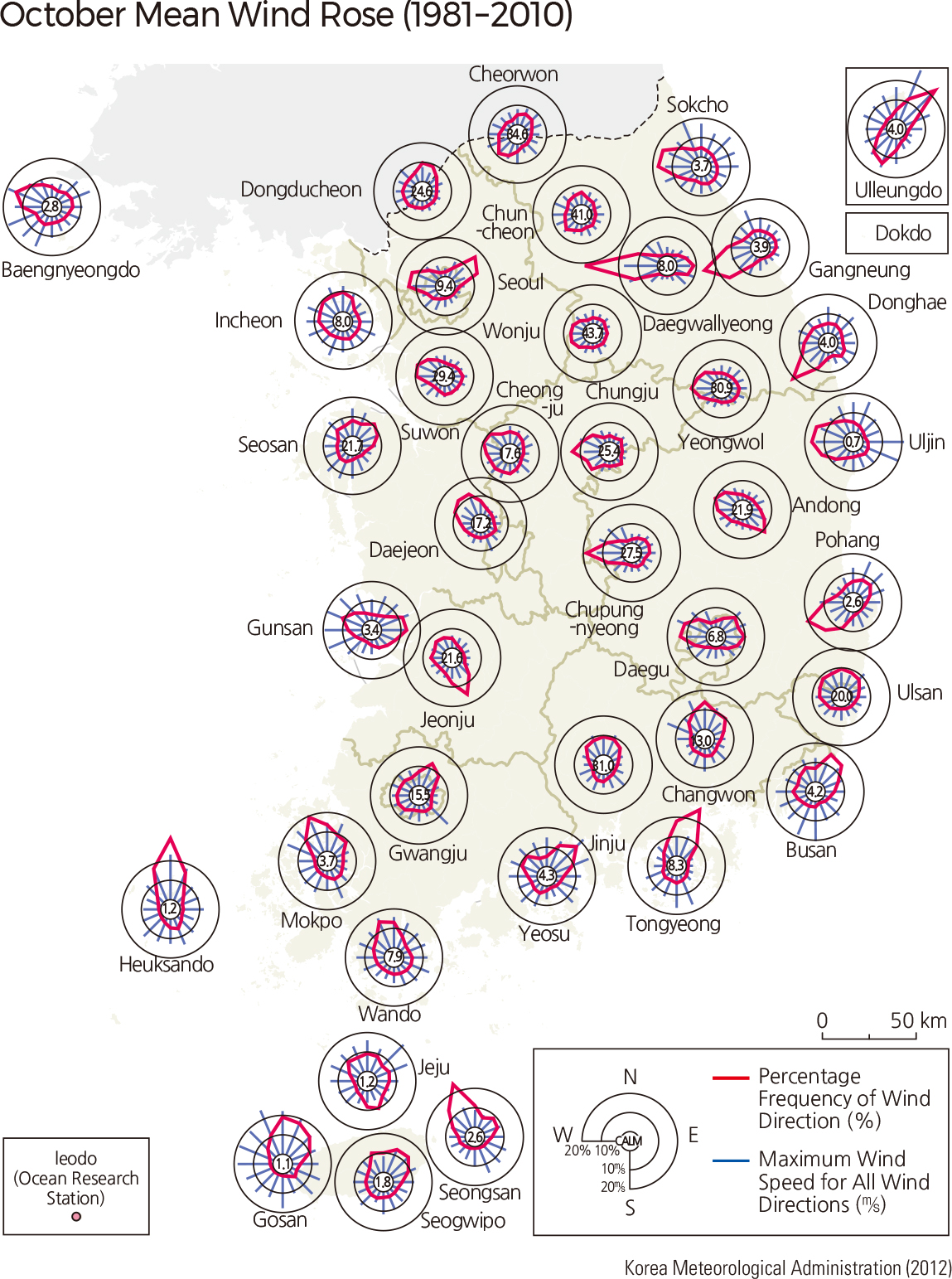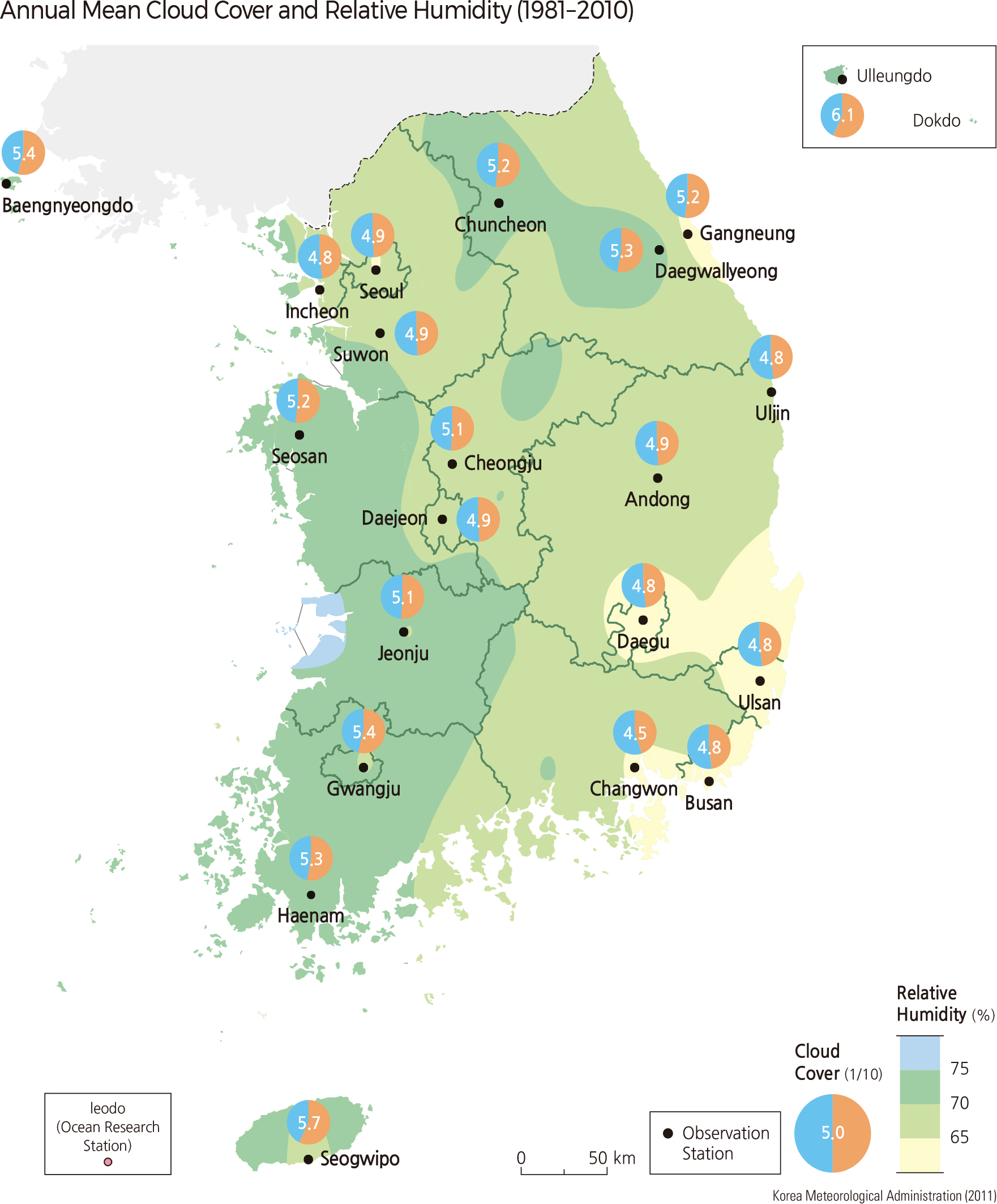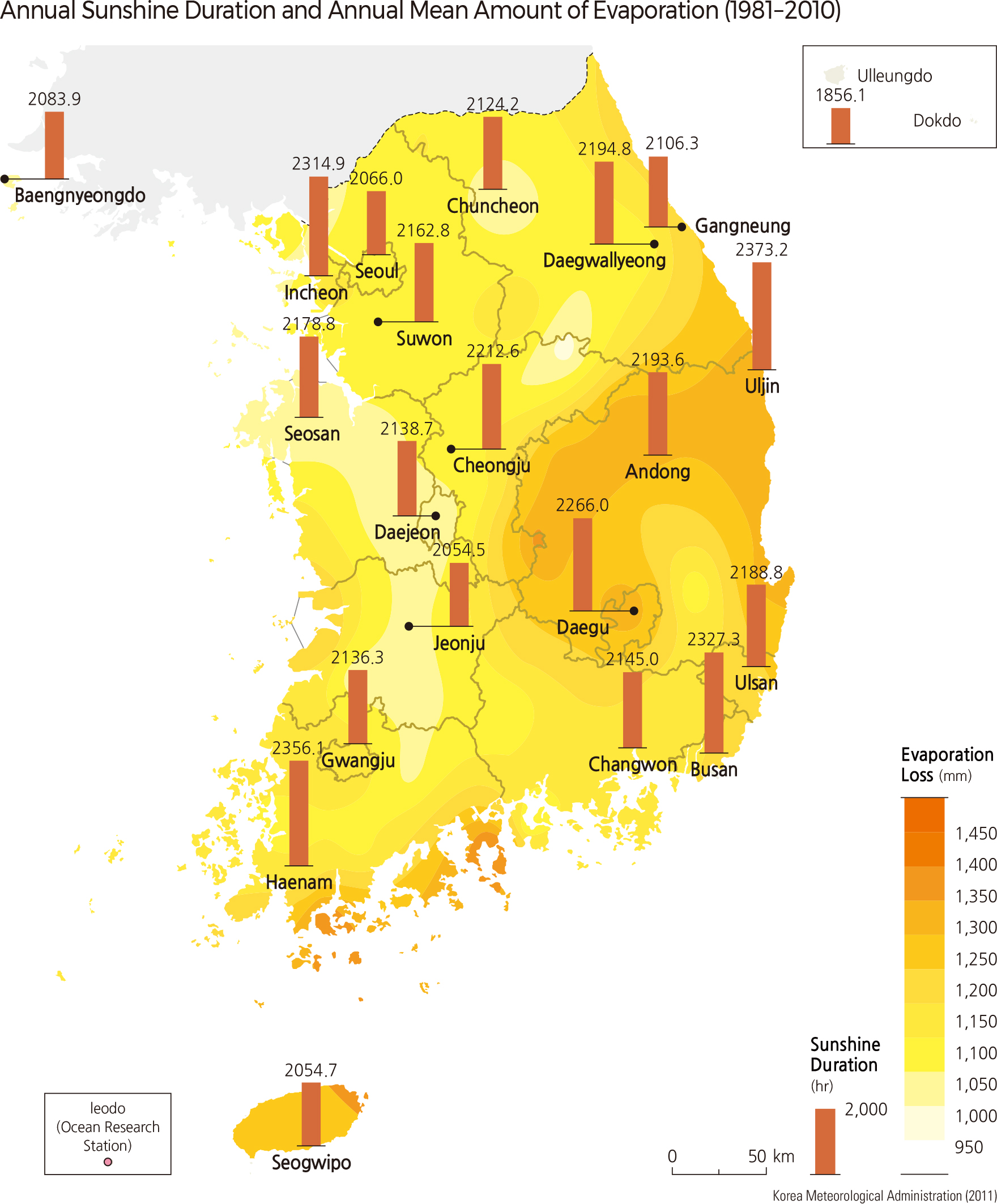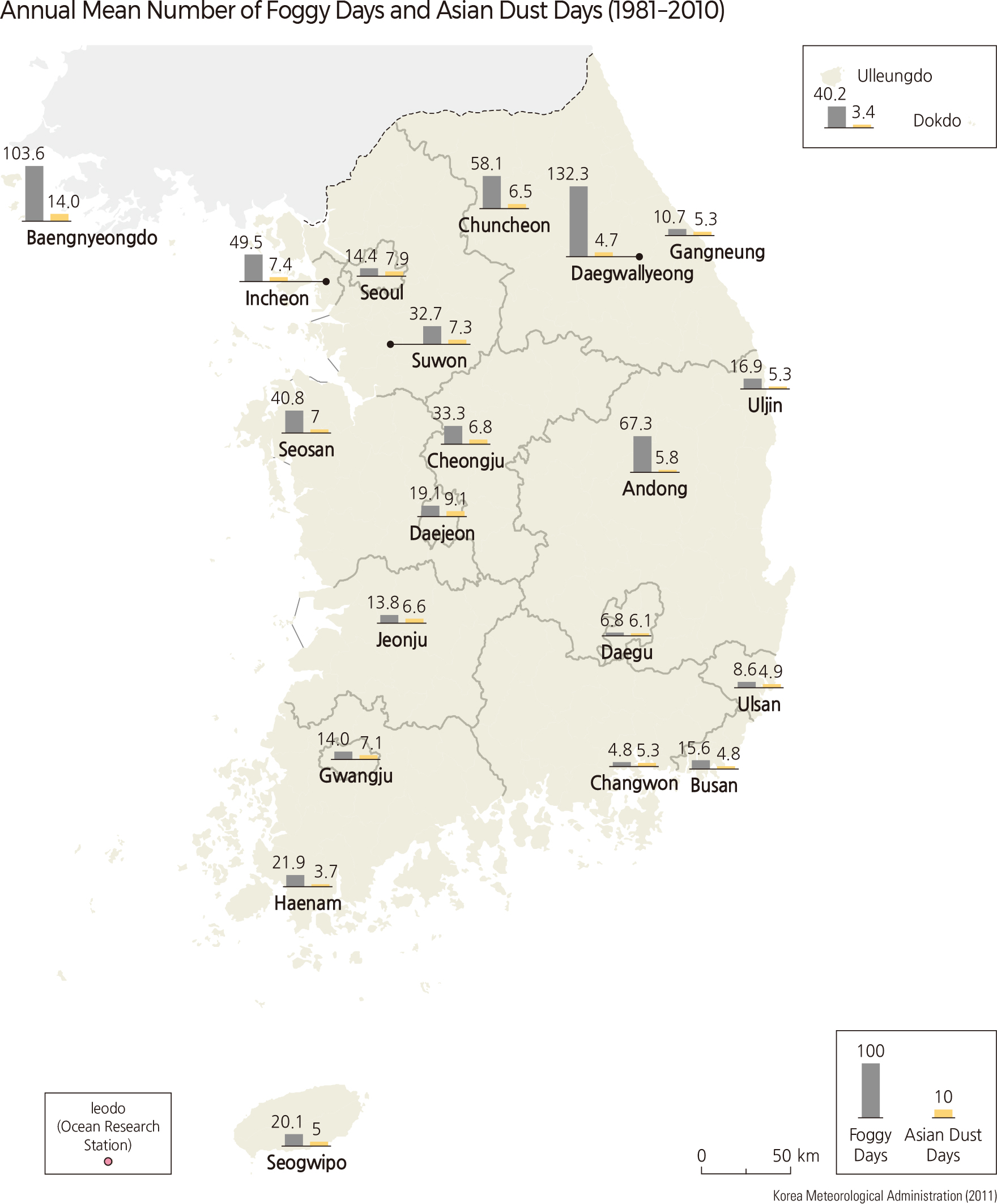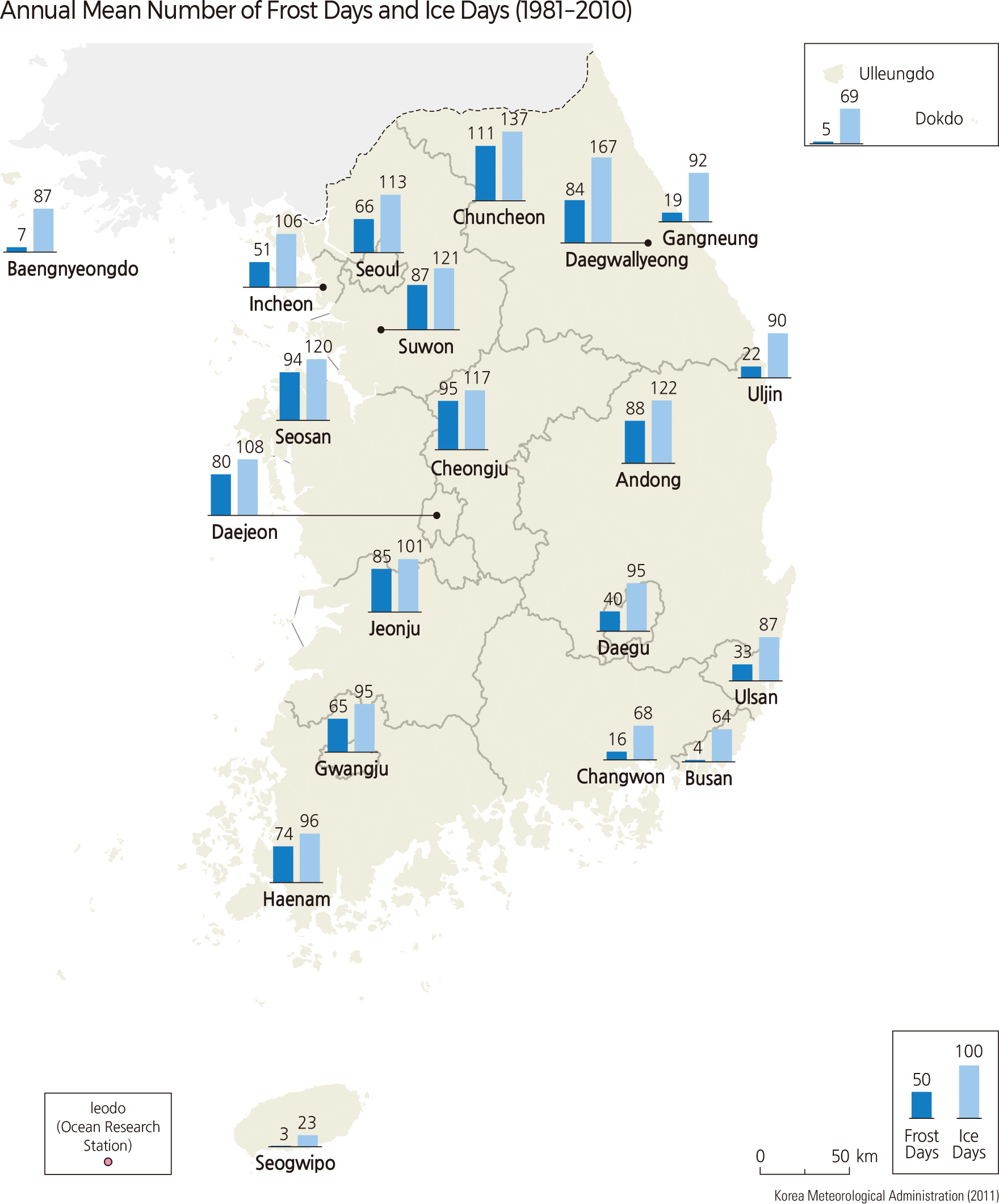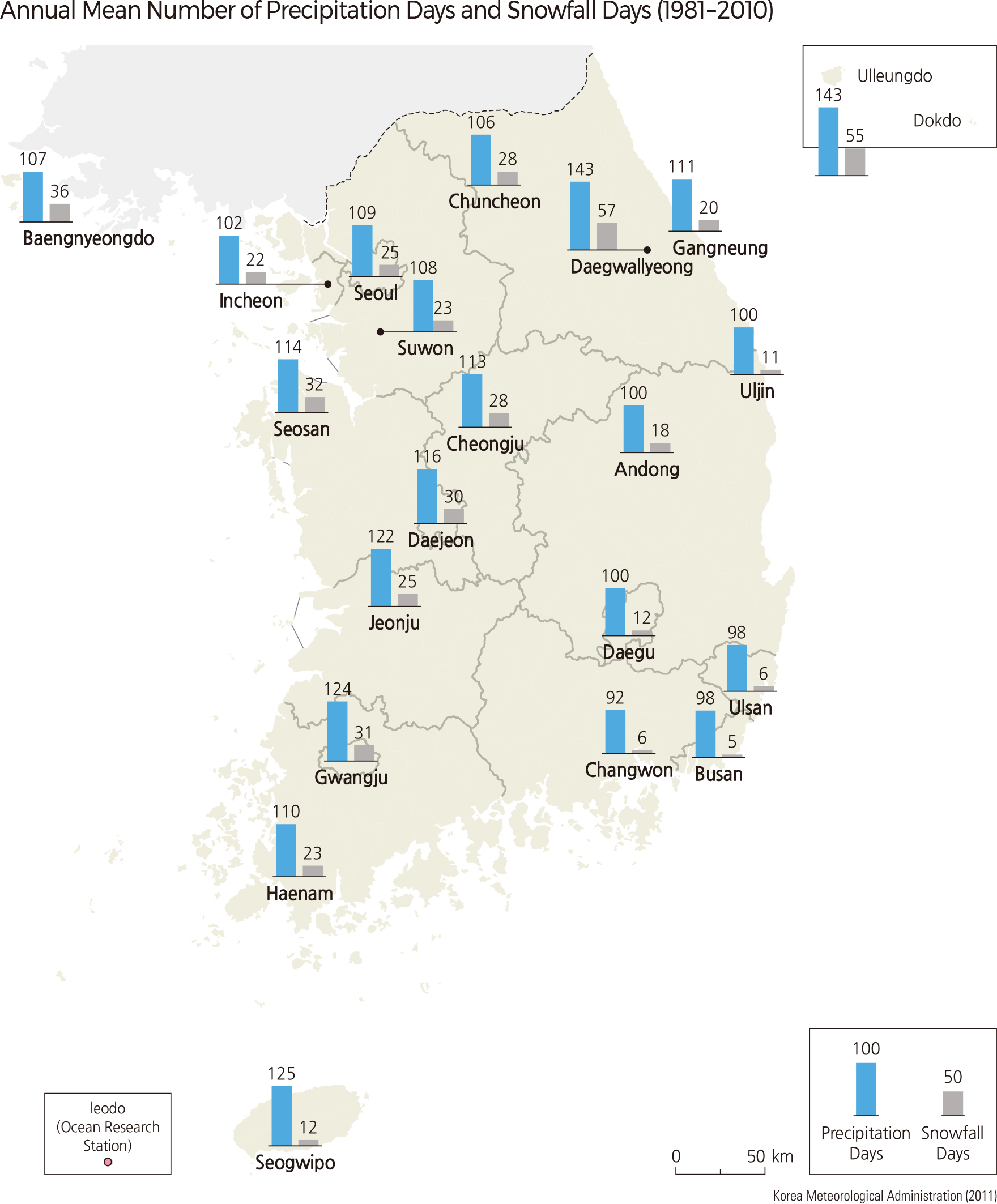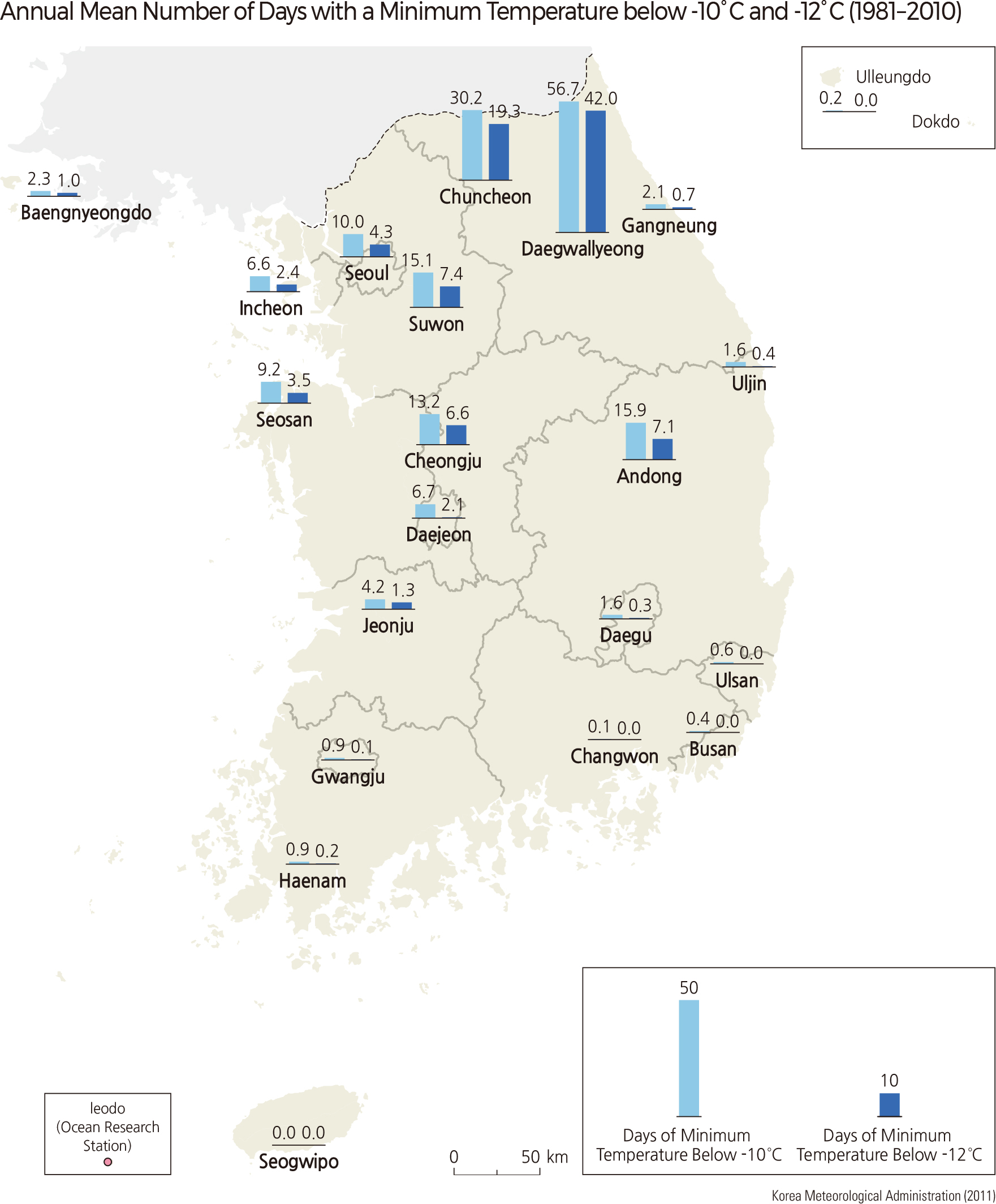English II 2020
Korea, located in the mid-latitudes, is largely affected by the westerlies and the East Asian monsoon system. Thus, the northerly and the westerly are dominant during winter, especially in January, while the southwesterly, the southerly, and the southeasterly prevail in summer, especially in August. However, the wind direction in summer is not as prevalent as in winter. Although there is no prevailing wind in spring (April) and autumn (October), the northeasterly often blows into the east coast areas. However, the wind direction can vary on a local scale with the geographical location of weather stations and their surrounding topography. Wind speed is generally much greater in coastal areas than in inland areas. The highest daily maximum wind speed was recorded in Gosan (51.1 m/s) on September 12, 2003, and the highest daily maximum instantaneous wind speed was recorded in Sokcho (63.7 m/s) on October 23, 2006.
The annual mean sunshine duration is short in island areas such as Seogwipo (2,054.7 hrs), Ulleungdo (1,856.1 hrs), and Baengnyeongdo (2,083.9 hrs). On the other hand, the annual mean sunshine duration is long in the Yeongnam inland areas, the southeastern coastal areas, and the southernmost parts of the Taebaeksanmaek. Uljin (2,373.2 hrs) has the longest annual mean sunshine duration, followed by Haenam (2,356.1 hrs), Busan (2,372.3 hrs), Daegu (2,260.0 hrs), and Andong (2,193.6 hrs). In terms of the amount of evaporation loss, Yeosu (1377.6 mm) has the largest while Ganghwa (956.8 mm) has the lowest.
Annual mean cloud cover in Korea varies from 4.5% to 6.1%. Gosan, Jeju, and Ulleungdo have the highest cloud cover, with 6.1%. Changwon and Ganghwa have the lowest cloud cover at 4.5%.
Annual mean relative humidity varies from 61.4% to 77.4%. The highest relative humidity appears in Heuksando (77.4%). Buan, Gunsan, and Ulleungdo also have high relative humidity. The lowest relative humidity appears in Gangneung (61.4%). Daegwallyeong experiences the highest annual mean number of days with fog (132.3 days) due to high altitude. On average, the eastern coast has more foggy days than the western coast. Low numbers of fog days are found in Changwon (4.8 days) and Daegu (6.8 days). The annual mean number of Asian dust days varies from 3.4 to 14 days. The number of Asian dust days decreases from the west coast to the east coast because Asian dust moves along with the westerlies. Baengnyeongdo has the greatest number of days (14.0days) while Ulleungdo has the fewest (3.4 days).
The greatest annual mean number of days with frost occurs in Chuncheon (111 days). The areas on the east coast experience more frost days than those on the west coast. For instance, Gangneung (19 days) and Uljin (22 days) have fewer frost days than Incheon (51 days) and Seosan (94 days). The least annual mean number of days with frost appears in Seoguipo (3 days). The largest annual mean number of days with ice occurs in Daegwallyeong (167 days). The annual mean number of ice days in the central region varies from 23 to 167 days, with the number of days decreasing from north to south. There is a relatively small difference in the annual mean number of ice days and frost days between the western coastal areas and the eastern coastal areas. The least number of ice days appears in Seoguipo (23 days). The annual mean number of days with daily precipitation over 0.1 mm in the central region and the southern region is about 110 days. Daegwallyeong and Ulleungdo (143 days) have about 30 more precipitation days than the average for the central region. There is a big difference in the annual mean number of snowfall days between the central (30 days) and the southern region (14 days). Due to its high elevation, the highest number of snowfall days occurs in Daegwallyeong (57 days), which is 37 days more than its neighboring city, Gangneung (20 days). Also, Ulleungdo experiences many snowfall days owing to the effects of the northeasterly. The regions with few annual snowfall days are Busan, Ulsan, and Changwon, with 5-6 days.
The annual mean number of days with a maximum temperature above 30˚C increases from coastal areas to inland areas. Daegu (58.0 days) experiences the greatest number of days with a maximum temperature over 30˚C, while Daegwallyeong (1.2 days) experiences the fewest. Daegu (8.6 days) also has the most number of days with a maximum temperature over 35˚C, while Daegwallyeong, Gangneung, Baengnyeongdo, and Ulleungdo (all 0.0 days) have the fewest.
The annual mean number of days with a minimum temperature below-10˚C and -12˚C decreases from north to south, but increases from coastal areas to inland areas, as well as with altitude. The maximum number of days with a daily minimum temperature below -10˚C occurs in Daegwallyeong (56.7 days) while the fewest number of days is found in Seogwipo (0.0 days). The most number of days with a daily minimum temperature below -12˚C occurs in Daegwallyeong (42.0 days) while the fewest number of days is found in Changwon, Ulleungdo, Busan, Ulsan, and Seogwipo (all 0.0 days).
The daily minimum temperature above 25˚C usually occurs from July to September. Seogwipo (25.4 days) has the most number of days with a minimum temperature above 25˚C while Daegwallyeong (0.0 days) has the fewest. |
